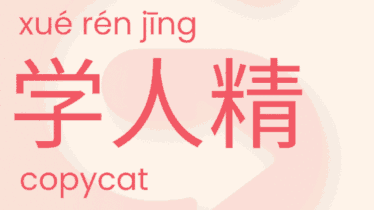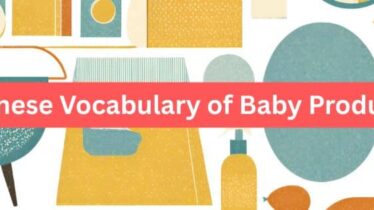Chinese Vocabulary Hacks: Using Character Combinations to Remember More Words
Learning Chinese vocabulary can feel overwhelming at first. Unlike English, where you memorize each word separately, Chinese offers a more systematic approach through character combinations. By understanding how basic characters work as building blocks, you can decode and remember new words much more easily.
In this post, we’ll look at how single characters act as word roots (词根 cí gēn) that combine with others to create meaningful vocabulary. This knowledge will transform the way you learn Chinese and give you the tools to make sense of thousands of words.
Why Character Combinations Matter
Chinese vocabulary works like a logical puzzle. Many words consist of components that contribute meaning to the whole. For instance, when you see 电话机 (diànhuàjī, telephone), you’re actually seeing:
- 电 (diàn) = electricity
- 话 (huà) = speech
- 机 (jī) = machine
Combined meaning: an “electricity speech machine” = telephone
Once you recognize these patterns, you’ll start noticing them everywhere in Chinese vocabulary. Let’s examine some of the most productive character building blocks and the words they help create.
机 (jī) – Machine/Mechanism
The character 机 (jī) appears in countless technological and mechanical terms. It’s incredibly versatile and often appears at the end of words that describe devices or machines.
| Chinese | Pinyin | Characters | English |
|---|---|---|---|
| 飞机 | fēi jī | fly + machine | airplane |
| 洗衣机 | xǐ yī jī | wash + clothes + machine | washing machine |
| 计算机 | jì suàn jī | calculate + machine | computer |
| 相机 | xiàng jī | image + machine | camera |
| 打印机 | dǎ yìn jī | hit + print + machine | printer |
| 录音机 | lù yīn jī | record + sound + machine | audio recorder |
| 吹风机 | chuī fēng jī | blow + wind + machine | hair dryer |
| 咖啡机 | kā fēi jī | coffee + machine | coffee maker |
| 收音机 | shōu yīn jī | receive + sound + machine | radio |
| 复印机 | fù yìn jī | copy + print + machine | photocopier |
When you encounter a new word ending with 机 (jī), you can often guess it refers to some kind of device or machine. This pattern helps enormously with vocabulary recognition.
花 (huā) – Flower
While 花 primarily means “flower,” it extends to things that resemble flowers, bloom, or spread out like flowers.
| Chinese | Pinyin | Characters | English |
|---|---|---|---|
| 雪花 | xuě huā | snow + flower | snowflake |
| 烟花 | yān huā | smoke + flower | fireworks |
| 花生 | huā shēng | flower + born | peanut |
| 花言巧语 | huā yán qiǎo yǔ | flower + words + clever + speech | flowery, insincere words |
| 花样 | huā yàng | flower + pattern | pattern/variety/style |
| 花束 | huā shù | flower + bundle | bouquet |
| 花茶 | huā chá | flower + tea | floral tea |
The 花 (huā)character vividly connects visual imagery with vocabulary concepts, making these words easier to remember.
水 (shuǐ) – Water
The character for water appears in many words related to liquids, flowing things, or items associated with water.
| Chinese | Pinyin | Characters | English |
|---|---|---|---|
| 水果 | shuǐ guǒ | water + fruit | fruit (juicy fruits) |
| 水平 | shu ǐpíng | water + flat | level (like water finding its level) |
| 水库 | shuǐ kù | water + storehouse | reservoir |
| 水牛 | shuǐ niú | water + ox | water buffalo |
| 水池 | shuǐ chí | water + pool | pond/pool |
| 水分 | shuǐ fèn | water + portion | moisture |
| 水壶 | shuǐ hú | water + pot | kettle |
| 水龙头 | shuǐ lóng tóu | water + dragon + head | faucet/tap |
| 水墨画 | shuǐ mò huà | water + ink + picture | traditional Chinese ink painting |
The mental image of water helps connect these terms conceptually, making them stick in your memory.
车 (chē) – Vehicle
The character 车 appears in virtually all terms related to vehicles and transportation.
| Chinese | Pinyin | Characters | English |
|---|---|---|---|
| 火车 | huǒ chē | fire + vehicle | train |
| 汽车 | qì chē | gas/steam + vehicle | car |
| 自行车 | zì xíng chē | self + move + vehicle | bicycle |
| 公共汽车 | gōng gòng qì chē | public + steam + vehicle | bus |
| 出租车 | chū zū chē | out + rent + vehicle | taxi |
| 电动车 | diàn dòng chē | electric + move + vehicle | electric vehicle |
| 三轮车 | sān lún chē | three + wheel + vehicle | tricycle |
| 摩托车 | mó tuō chē | motor + vehicle | motorcycle |
| 救护车 | jiù hù chē | rescue + protect + vehicle | ambulance |
| 货车 | huò chē | goods + vehicle | truck |
| 赛车 | sài chē | race + vehicle | racing car |
| 卡车 | kǎ chē | card + vehicle | truck (transliteration) |
Once you recognize 车, you’ll immediately know the word relates to transportation, which helps narrow down meaning even before you fully understand the word.
电 (diàn) – Electricity
This character appears in most modern technology terms, especially anything powered by electricity.
|
Chinese |
Pinyin | Characters | English |
|---|---|---|---|
| 电脑 | diàn nǎo | electricity + brain | computer |
| 电影 | diàn yǐng | electricity + shadow | movie |
| 电话 | diàn huà | electricity + speech | telephone |
| 电梯 | diàn tī | electricity + ladder | elevator |
| 电池 | diàn chí | electricity + pool | battery |
| 电视 | diàn shì | electricity + vision | television |
| 电子邮件 | diàn zǐ yóu jiàn | electron + mail | |
| 电费 | diàn fèi | electricity + fee | electricity bill |
| 电流 | diàn liú | electricity + flow | electric current |
| 电源 | diàn yuán | electricity + source | power supply |
| 电灯 | diàn dēng | electricity + lamp | electric light |
| 电压 | diàn yā | electricity + pressure | voltage |
The character 电(diàn) immediately signals that something relates to electrical power or electronic technology.
手 (shǒu) – Hand
This character appears in words related to hands, manual operations, or handheld items.
| Chinese | Pinyin | Characters | English |
|---|---|---|---|
| 手机 | shǒu jī | hand + machine | mobile phone |
| 手表 | shǒu biǎo | hand + watch | wristwatch |
| 手套 | shǒu tào | hand + cover | glove |
| 手指 | shǒu zhǐ | hand + point | finger |
| 手掌 | shǒu zhǎng | hand + palm | palm of hand |
| 手工 | shǒu gōng | hand + work | handcraft |
| 手势 | shǒu shì | hand + posture | gesture |
| 手段 | shǒu duàn | hand + method | means/method |
| 手续 | shǒu xù | hand + procedure | procedure/formality |
| 洗手间 | xǐ shǒu jiān | wash + hand + room | bathroom |
The 手(shǒu) character provides an immediate clue that something relates to manual operation or handheld objects.
火 (huǒ) – Fire
This versatile character appears in words related to fire, heat, cooking, or enthusiasm.
| Chinese | Pinyin | Characters | English |
|---|---|---|---|
| 火山 | huǒ shān | fire + mountain | volcano |
| 火柴 | huǒ chái | fire + wood | match |
| 火锅 | huǒ guō | fire + pot | hot pot |
| 火车 | huǒ chē | fire + vehicle | train |
| 火药 | huǒ yào | fire + medicine | gunpowder |
| 火花 | huǒ huā | fire + flower | spark |
| 火炉 | huǒ lú | fire + stove | furnace/heater |
The imagery of fire helps connect these words conceptually, making them more memorable.
木 (mù) – Wood/Tree
This character appears in words related to trees, wooden objects, or wooden materials.
| Chinese | Pinyin | Characters | English |
|---|---|---|---|
| 木材 | mù cái | wood + material | timber |
| 木偶 | mù’ ǒu | wood + figurine | puppet |
| 木制 | mù zhì | wood + make | wooden |
| 木工 | mù gōng | wood + worker | carpenter |
| 木板 | mù bǎn | wood + board | wooden board |
| 林木 | lín mù | forest + wood | forest trees |
| 木匠 | mù jiàng | wood + craftsman | carpenter |
| 木屋 | mù wū | wood + house | wooden house/cabin |
The 木(mù)character immediately signals that something relates to wood or trees.
口 (kǒu) – Mouth
This character appears in words related to openings, speaking, eating, or entrances/exits.
| Chinese | Pinyin | Characters | English |
|---|---|---|---|
| 入口 | rù kǒu | enter + mouth | entrance |
| 出口 | chū kǒu | exit + mouth | exit |
| 口语 | kǒu yǔ | mouth + language | spoken language |
| 口味 | kǒu wèi | mouth + taste | flavor/taste |
| 门口 | mén kǒu | door + mouth | doorway |
| 口罩 | kǒu zhào | mouth + cover | face mask |
| 开口 | kāi kǒu | open + mouth | to speak/to open |
| 口吻 | kǒu wěn | mouth + manner | tone of speaking |
| 口水 | kǒu shuǐ | mouth + water | saliva |
The character 口(kǒu) provides an immediate visual connection to the concept of openings or communication.
心 (xīn) – Heart
This character appears in words related to feelings, emotions, thoughts, or the mental state.
| Chinese | Pinyin | Characters | English |
|---|---|---|---|
| 开心 | kāi xīn | open + heart | happy |
| 小心 | xiǎo xīn | small + heart | careful |
| 放心 | fàng xīn | release + heart | rest assured |
| 担心 | dān xīn | carry + heart | worry |
| 爱心 | ài xīn | love + heart | kindness/love |
| 用心 | yòng xīn | use + heart | attentive/careful |
| 安心 | ān xīn | peaceful + heart | relieved/at ease |
| 核心 | hé xīn | nucleus + heart | core/essence |
| 良心 | liáng xīn | good + heart | conscience |
| 伤心 | shāng xīn | wound + heart | sad/heartbroken |
| 心情 | xīn qíng | heart + feeling | mood |
| 心理 | xīn lǐ | heart + principle | psychology |
The 心 (xīn ) character provides an immediate emotional connection, making these words more intuitive.
Memory Tips for Chinese Character Combinations
When learning these character combinations, try these memory techniques:
- Create visual stories: For 电话 (telephone), imagine electricity carrying your voice through wires.
- Connect to what you know: 手机 (mobile phone) makes sense as a “hand machine” since we hold phones in our hands.
- Look for patterns: Notice how 机 is consistently used for devices, while 电 signals something related to electricity.
- Group related vocabulary: When learning words with 水 (water), group them together and review them as a set.
- Draw connections: Create mental mind maps showing how characters connect to form different words.
The beauty of Chinese vocabulary lies in its logical structure. Unlike languages where words must be memorized individually, Chinese gives you a framework for understanding and predicting word meanings.
Expand Your Understanding with These Related Resources
Want to deepen your understanding of Chinese characters and vocabulary building? Check out these related articles from GoEast Mandarin:
- How to Remember Chinese Words – Effective techniques to make vocabulary stick in your memory
- Chinese Character Stroke Order – Master the correct way to write Chinese characters
- Chinese Characters That Look the Same But Have Different Meanings – Avoid common confusion with similar-looking characters
- All About Chinese Characters – A comprehensive guide to understanding Chinese writing
- The Most Loved Simplified Chinese Characters – Discover characters that Chinese speakers find especially beautiful
- How to Learn Chinese Hanzi Characters Efficiently – Advanced strategies for rapid character acquisition
At GoEast Mandarin, we’re committed to making Chinese language learning accessible, systematic, and enjoyable. Explore these resources to continue building your understanding of Chinese character patterns and take your vocabulary skills to the next level!




